How Many Animals Die Each Year In The Circus
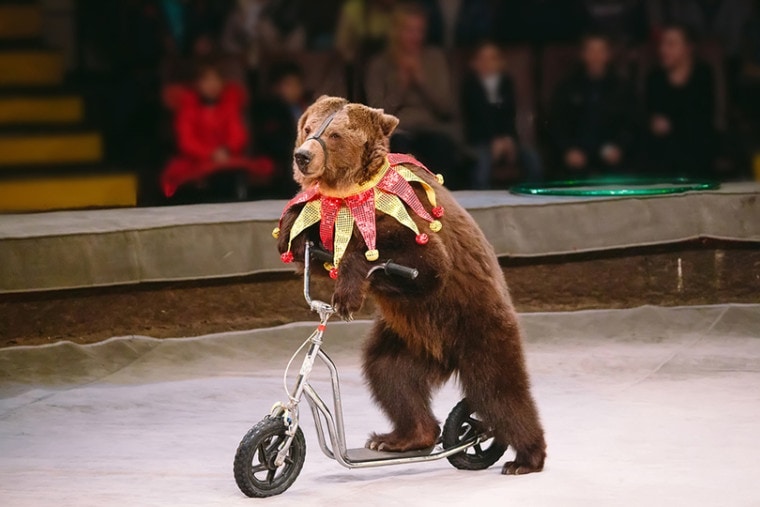
Note: This commodity's statistics come from tertiary-party sources and do not represent the opinions of this website.
What memories come up to your mind when the word 'circus' is mentioned? Does your mind race to a retentiveness of a bear riding a bicycle, a tiger jumping through a peppery hoop, or an elephant standing on its hind legs?
These tricks are magnificent to watch, and crowds cheer in applause. Sadly, these animals undergo confinement, domination, and violent training to larn these tricks behind closed doors.
Here are 18 disheartening circus animal statistics and facts, including:
- 6 Saddest Circus Animals Cruelty Preparation Facts
- 6 Most Shocking Circus Fauna Abuse Facts
- four Worst Animal and Man Deaths in Circuses Facts
- 2 Most Notable Cases of Government Intervention on Circus Animal Abuse

The 18 Disheartening Circus Brute Statistics & Facts
- Entertainers apply whips sticks on tigers drag them by heavy chains.
- Trainers use bullhooks and electric prods on elephants.
- Trainers mask the cruelty on elephants using Wonder Dust.
- Bears are agonized to stand on their hind legs or face strangulation.
- Training circus chimps also involves cruelty.
- Dehydration and starvation are function of training techniques.
- Trainers ignore the complex needs of wild circus animals.
- Circus animals spend most of their lives bars in bondage or cages.
- Elephants in captivity contract the homo strain of tuberculosis.
- Circus animals are susceptible to lameness and arthritis.
- The animals endure from obesity.
- Circus animals are prone to zoochosis.
- Circus animals die premature deaths.
- Circus animals try to escape the cruelty but take nowhere to run.
- Provoked or escaped circus animals threaten circus members and the crowds.
- Circus animals dice on the road.
- Only 48 countries in the earth have regulated or banned the utilise of animals in circuses.
- U.s.a. Department of Agriculture is even so to enforce circus animals' rights.


The 6 Saddest Circus Animals Cruelty Training Facts
Nigh people have no thought of the ordeal circus animals undergo to acquire and perform an unusual play a trick on. Here are animal cruelty circus facts notwithstanding happening to appointment.
one. Entertainers Use Whips Sticks on Large Cats and Drag Them by Heavy Bondage
(Source: Britannica)
Big cats perform in circuses out of fear. Lions and tigers are powerful and wild at centre, so trainers strike them into submission with whips and sticks. Whipping is supposedly meant to teach the big cats that aggression and disobedience are punishable, discouraging acts. At other times, these large cats are tied heavy bondage around their necks and dragged around.
The cruelty does not cease with big cats. Elephants, besides, undergo intense ordeals.
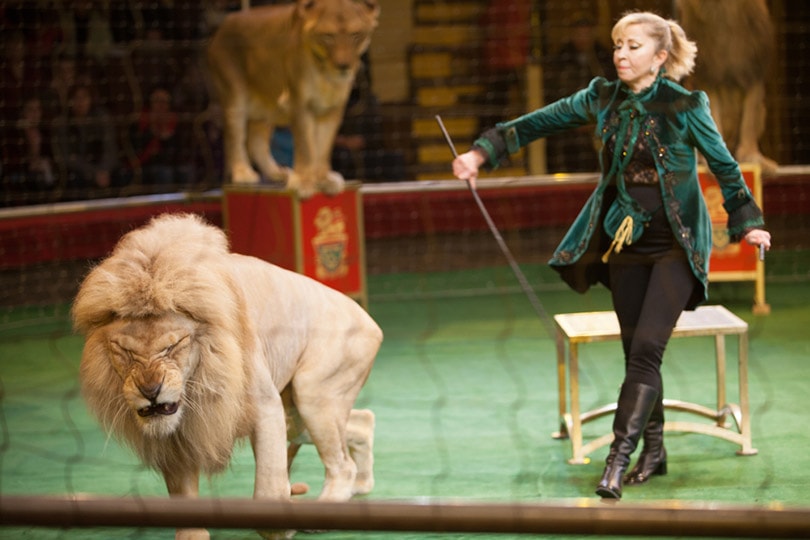
2. Trainers Utilize Bullhooks and Electric Prods on Elephants
(Source: 1 Green Planet)
Different big cats, elephants have thicker peel. Even so, it does not save them from the bullhooks and electric stupor prods.
Bullhooks are heavy, steel-tipped tools that expect like fireplace pokers. Trainers apply these weapons to cause farthermost pain to the animal by digging into an elephant's sensitive flesh similar the ankles, within of an elephant's ear or oral fissure, or backside the ears.
Another painful and barbaric tool in the training process is the electric prod. This tool instills fearfulness and pain in circus animals.
This is why elephants perform tricks on command out of fear that failure will issue in a shock. They feel intimated past the mere sight of bullhooks and electric daze prods.
These barbaric tools ofttimes leave ugly marks and scars on elephants, only people rarely detect them. How so?
iii. Trainers Mask the Cruelty on Elephants Using Wonder Dust
(Source: PETA)
Wonder Dust is a gray powder that coagulates and conceals elephant wounds. The pulverization facilitates quick healing of lesions and sores, hence eliminating the need for bandages. You will probable find Wonder Dust applied on the tissue backside its ears, nether the mentum, around the anus, tender spots on the truck, and effectually the feet.
If you lot think you take read plenty nigh circus animal corruption facts, here is what some bears face.
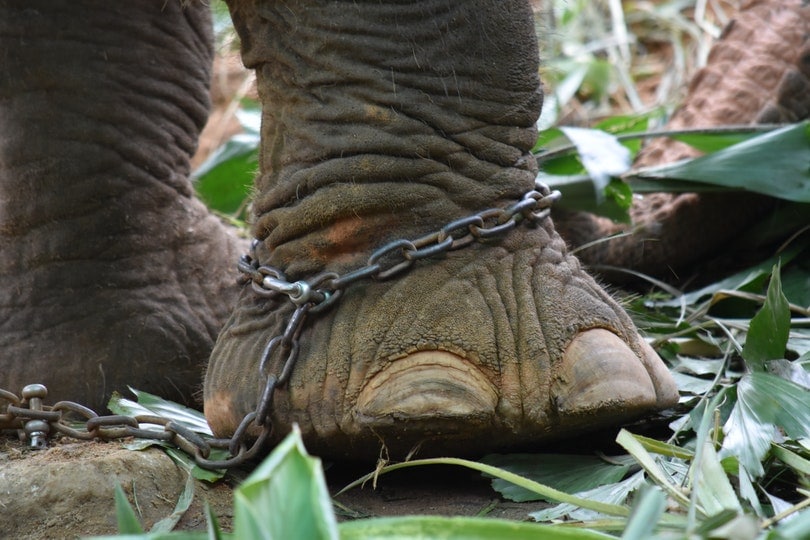
4. Bears are Agonized to Stand Upright or Face Strangulation
(Source: PETA2)
In Suzhou, Cathay, bear cubs are taught to stand up on their hind legs by having them chained by their necks and so tethered to a wall. What happens when these cubs are exhausted from this unnatural behavior?
They take no pick but to hold themselves up. Failure to do so results in choking and strangulation.
5. Preparation Circus Chimps Also Involves Cruelty
(Source: Jane Goodall Org)
Chimps, anile six to viii years, are challenging to manage and railroad train. To control them, trainers fit them with shock collars, pull out their teeth, or whip them. As Jane Goodall explains, a smile on a chimpanzee'south face does not translate to happiness. On the opposite, it is a grin of fright.
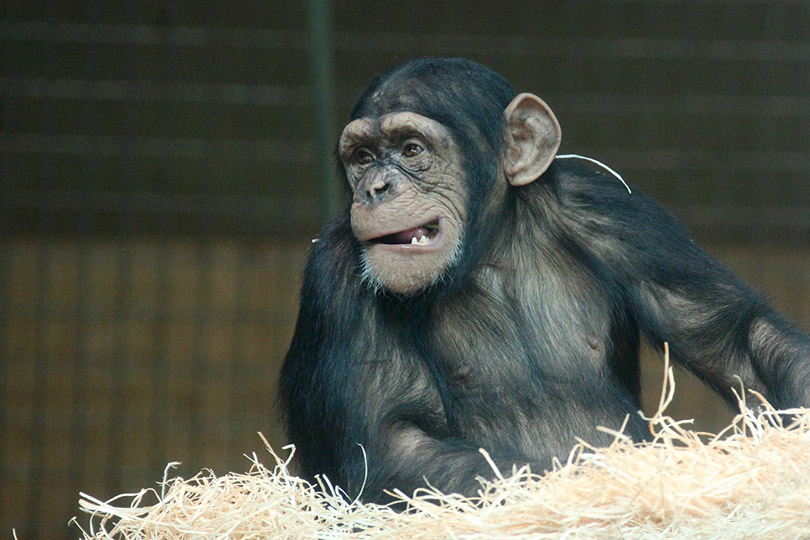
6. Dehydration and Starvation Are Role of Training Techniques
(Source: Petpedia)
Whipping and shocking are not the only punishments circus animals suffer from. They are besides deprived of bones needs similar nutrient and water.
When circus animals learn and perform a trick successfully, they are rewarded with food and water. However, if they neglect, they are denied food.
This conditioning teaches the circus animals that they have to perform an act successfully to eat and drink. The workout also enables trainers to establish their dominance on starved and dehydrated animals.
The 6 Most Shocking Circus Animal Abuse Facts
Suffering is an integral part of circus animals' lives. Hither is what we discovered.
vii. Trainers Ignore the Circuitous Needs of Wild Circus Animals
(Source: PETA)
It is thrilling to lookout a tiger leap through a ring of fire. Simply did you know that these big felines are naturally terrified of fire? These big cats are whipped, starved, and punished to a point where they fright the fire less than the training ordeals.
Moreover, tigers are solitary animals. Sadly, they are forced to live in close proximity with other animals in the circus, which has led to fights and injuries. These felines are semi-nocturnal too. However, trainers force them to perform during the day.
When it comes to elephants, these animals thrive in herds. In the wild, female elephants bask the company of their moms for life while males leave the herd during their teens.
Sadly, calves as young as 18 months are dragged away from their mothers and forced to live in solitary. This is a trainer's way of breaking the elephant physically and mentally.

viii. Circus Animals Spend Nigh of Their Lives Confined in Chains or Cages
(Source: World Animal Protection)
96% of wild circus animals spend most 11 months a yr in chains or cages. These animals are bars in tiny cages where they accept to eat, defecate, and sleep during travel.
Have circus bears and large cats, for example. They are kept in a maximum of 5 x 10-foot cages for upwards to 26 hours in boxcars without climate control! This forces the circus animals to pace up and down for hours or stay sedentary.
It is only natural to notice severe sores and bruises on these animals due to rubbing their bodies repeatedly on the cage bars. And that'southward non all.
9. Elephants in Captivity Can Contract the Human Strain of Tuberculosis
(Source: Petpedia)
Elephants are more susceptible to the human being strain of tuberculosis compared to other circus animals. They are known to carry the bacteria and transmit information technology to humans, peculiarly minor children. Tuberculosis is transmitted through air, significant anyone, whether human being or elephant, who comes into contact with the infected fauna is at gamble.
In 2009, Tennessee suffered a serious outbreak that was linked to tuberculosis-infected circus elephants. In 2013, viii zoo workers in Oregon contacted TB after their close contact with an sick elephant. Unfortunately, some elephants have died from tuberculosis.

ten. Circus Elephants Are Susceptible to Lameness and Arthritis
(Source: PubMed)
Did you know that elephants tin walk up to 50 miles a day in the wild? It turns out that they suffer physical bug when they do non movement. Sadly, walking is a luxury among circus elephants, and most do not walk over xxx miles during captivity.
A recent survey on five elephants of African descent and 62 of Asian descent showed that these animals suffered from chronic arthritis, lameness, and rheumatoid disorders. The elephants received an average walk of 45 minutes a 24-hour interval, which is incomparable to the animal's physical needs. The survey also showed that the elephants had to endure continuing on hard concrete surfaces for extended periods, a recipe for rheumatoid disorders, lameness, and arthritis.
The foot issues effect from circus animal corruption, but the elephants get euthanized for getting ill.
11. The Animals Suffer from Obesity
(Source: Petpedia)
When species like monkeys, tigers, ponies, or elephants are denied mobility and exercise and confined to small-scale cages for endless hours, they are forced to battle obesity. There have been elephant calves chained for 23 hours a day when undergoing the brutal 'breaking process.'
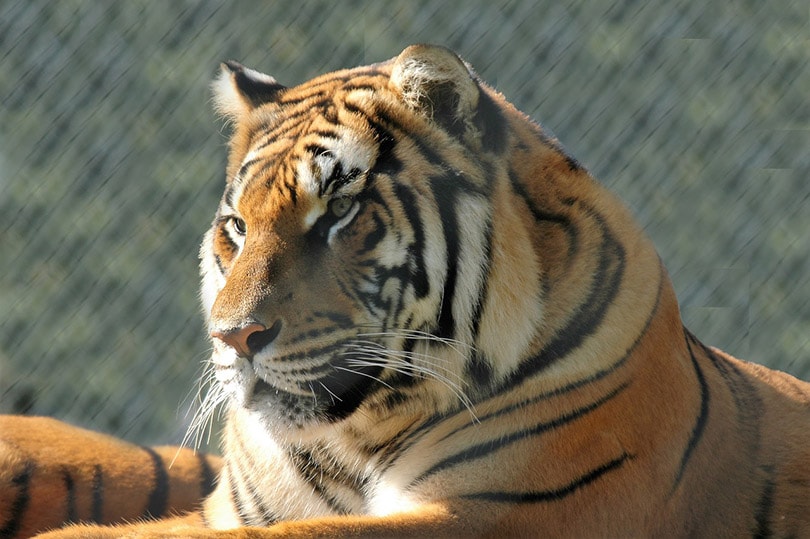
12. Circus Animals Are Prone to Zoochosis
(Source: Ane Green Planet)
You must have seen lions, tigers, and bears pacing back and along in their cages, only take you lot always wondered why they practise so? It is due to extreme frustration and increased mental stress, also known as zoochosis.
Captive circus animals are deprived of their natural behavior, stimuli, and environments. They begin to manifest abnormal behaviors to cope with the overwhelming distress. So, the next fourth dimension y'all meet a circus creature engaging in self-destructive behavior, pacing, rocking back and along, or grooming endlessly, information technology could exist suffering from zoochosis.
The 4 Worst Creature and Human Deaths in Circuses Facts
It is heartbreaking that circus animals die premature deaths afterward living an unnatural life of beatings, rigorous training, chaining, caging, and misery. Humans, besides, confront decease threats from interacting with circus animals.
13. Circus Animals Die Premature Deaths
(Source: Born Free Us)
At least 65 circus elephants have died prematurely betwixt 1994 and 2016. Wild elephants alive for lx to 70 years, but captive elephants are ofttimes dead before they accomplish twoscore. Some of these circus elephants are euthanized due to osteoarthritis, tuberculosis, or declining wellness.
Apart from elephants, big cats also die prematurely from living in captivity. It is estimated that 126 big cats have died from suffering from zoochosis.
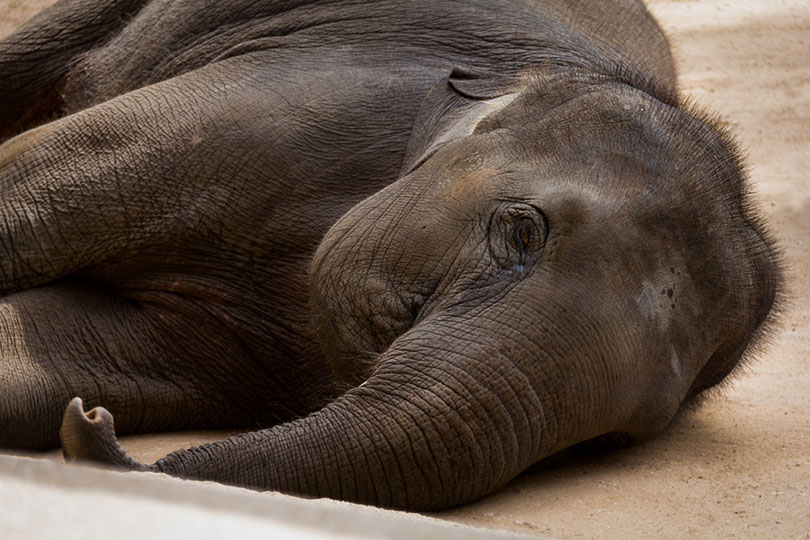
14. Circus Animals Attempt to Escape the Cruelty just have Nowhere to Run
(Source: Globe Animal Protection)
Some circus animals snap after enduring constant abuse. When this happens, they try to abscond from the cruelty of their harsh trainers and the noisy circus. But where tin can they possibly run to? Nowhere.
In August 1994, Hawaii residents watched as one circus animal tried to escape. Tyke, a female African elephant, had had her off-white share of the circus life.
She tried to flee and, in the process, seriously injured her groomer and killed her trainer. Her freedom was brusk-lived as she spent 30 minutes running through the streets of Honolulu before the local police force gunned her down with 87 bullets. She died aged 21 years.
In 2019, a zebra named Pumba escaped a circus in Germany. It caused a collision between 2 cars as they attempted to avoid striking it. However, there were no serious injuries or fatalities. Sadly, Pumba was shot expressionless when authorities failed to contain him. Instead of using a tranquilizer dart, the rescue officeholder opted to fire a lethal bullet. Disheartening right?
15. Provoked or Escaped Circus Animals Threaten Circus Members and the Crowds
(Source: PETA, PETA)
When Tyke the elephant escaped, she killed her trainer and injured a dozen spectators. Between 1987 and 2019, there have been xx homo deaths from circus elephant incidents and less than 140 documented injuries to humans.
Ettore Weber, a circus trainer, too suffered the same fate. Every bit he was prepping iv tigers for a testify, one of the tigers snapped and knocked him downwardly while the balance pounced on him. The medics or boyfriend trainers could do zip to help except sentinel the tigers play with Weber's maimed trunk for one-half an 60 minutes. These tigers had persevered too much, and their style of speaking out was through lashing out, which proved fatal for Weber.
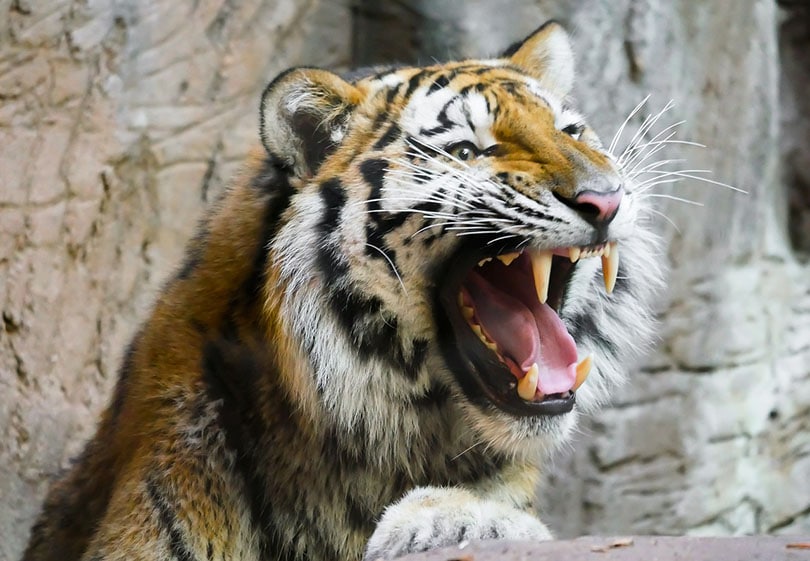
xvi. Circus Animals Die while Traveling
(Source: ABC News)
It is no wonder that some circus animals have died when traveling. They are hauled in poorly ventilated boxcars and containers while indelible extreme weather conditions.
In 2009, a lioness and 8 tigers died during a 20-hr trip inside a refrigerated container in a truck. According to local government, these animals died as a result of inhaling frazzle fumes. They explained that the felines inhaled the exhaust fumes while locked in a container without heating or air conditioning and froze to death.
The 2 Most Notable Cases of Government Intervention on Circus Brute Abuse
Hither are more disheartening facts well-nigh how the municipalities and states have acted almost circus creature abuse.
17. Only 48 Countries in the World Have Regulated or Banned the Use of Animals in Circuses
(Source: Federal Circus Bill)
Out of 195 countries, only 48 countries have taken measures to limit or ban animal circuses. Bolivia was the first country to manage and ban the use of domestic and wild fauna in circuses. Other countries have followed suit, and there is hope that this number will increase since circuses with human being entertainers are gaining popularity.
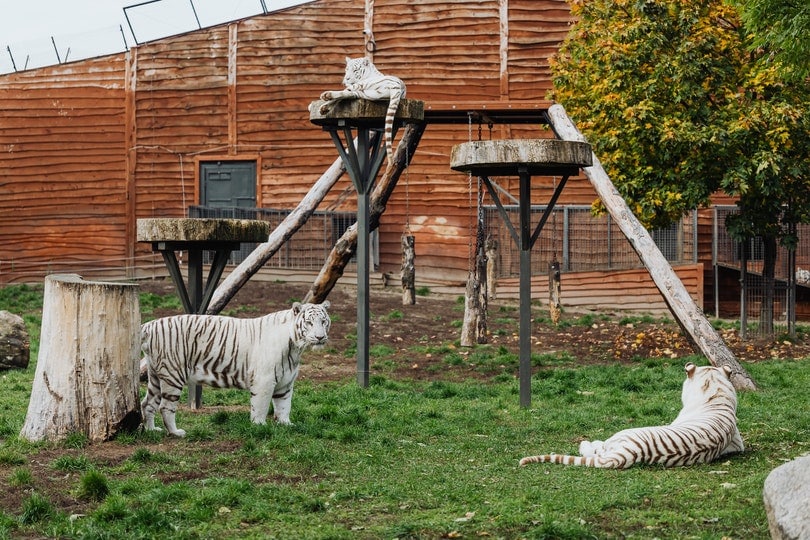
18. US Department of Agriculture is Withal to Enforce Circus Animals' Rights
(Source: Built-in Free USA)
The United states Department of Agriculture is responsible for enforcing the Animal Welfare Act (AWA) but has failed to practice so. Even afterward listening to bystander accounts, sworn testimonies from circus employees, and apparent physical trauma on the animals, the officials accept failed to have action. Why?
As of 2018, there were just 112 inspectors responsible for monitoring the living conditions in viii,272 facilities, with more than two,600 were licensed exhibitors who worked in circuses. This proves that police enforcement and inspections are a problem.

Exercise Animal Circuses Yet Exist?
Sadly, they do. But 48 countries have banned or regulated this show business which ways there are hundreds of animal circuses.
Which Countries Have Banned Brute Circuses?
They include Republic of austria, Bosnia, Bolivia, Bosnia and herzegovina, Colombia, Bulgaria, Costa rica, Cyprus, Croatia, Czechia, Ecuador, Denmark, England, El Salvador, Estonia, Finland, Guatemala, Greece, Hungary, Iran, India, Ireland, Israel, Italy, Lebanon, Republic of latvia, Luxembourg, Lithuania, Malta, Mexico, Macedonia, Norway, Republic of peru, Panama, Paraguay, Portugal, Poland, Romania, Serbia, Scotland, Slovakia, Slovenia, Singapore, Sweden, Taiwan, Netherlands, Ukraine, and Wales.
What Tin I Do to Help Circus Animals?
For starters, refrain from attending circuses that use animals for entertainment and sign petitions to stop animal cruelty. You lot can also nourish fauna-friendly circuses.
Moreover, you tin can educate your kids or those effectually you about what circus animals go through. Doing so can help raise awareness and help ban animate being circuses.

Decision
Animals, whether wild or domestic, deserve to live without abuse, torture, and mistreatment. Information technology is unfair for any brute to spend most of its life chained or caged in the proper name of amusement. It is time the circus brute list came empty.
Featured Image Credit: David Tadevosian, Shutterstock
Source: https://petkeen.com/circus-animal-statistics/
Posted by: mayhewsionech1955.blogspot.com

0 Response to "How Many Animals Die Each Year In The Circus"
Post a Comment